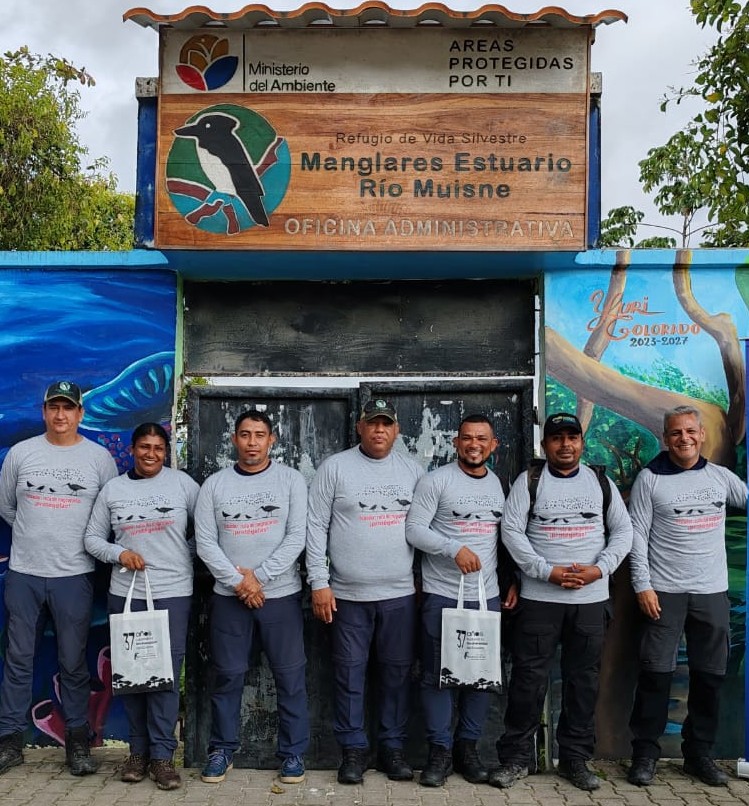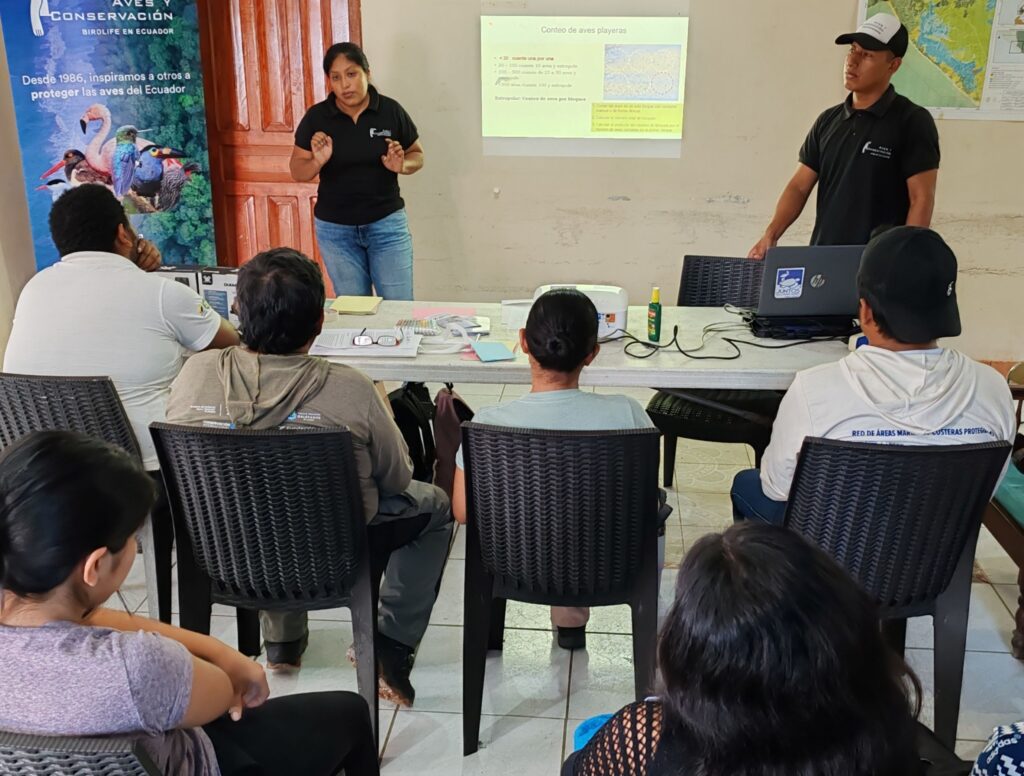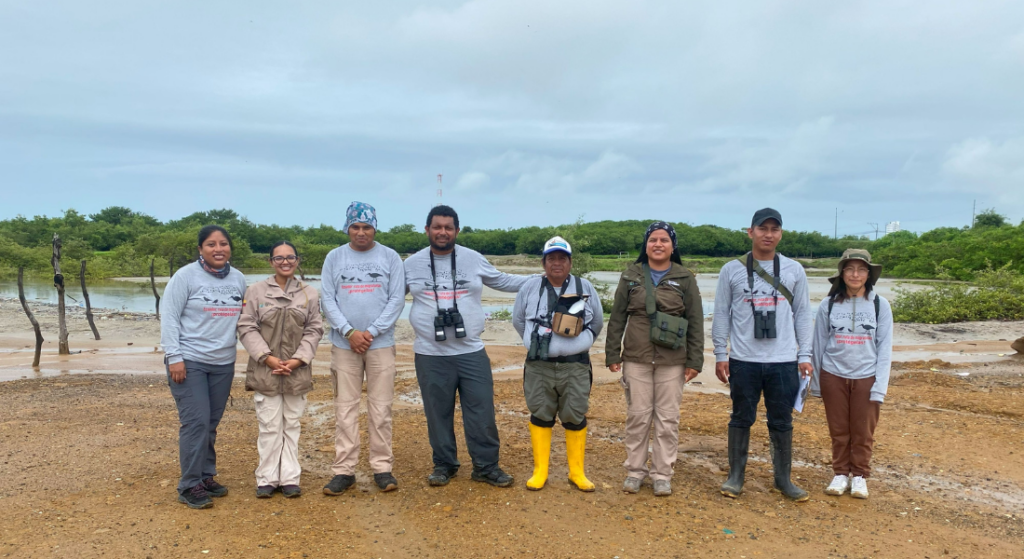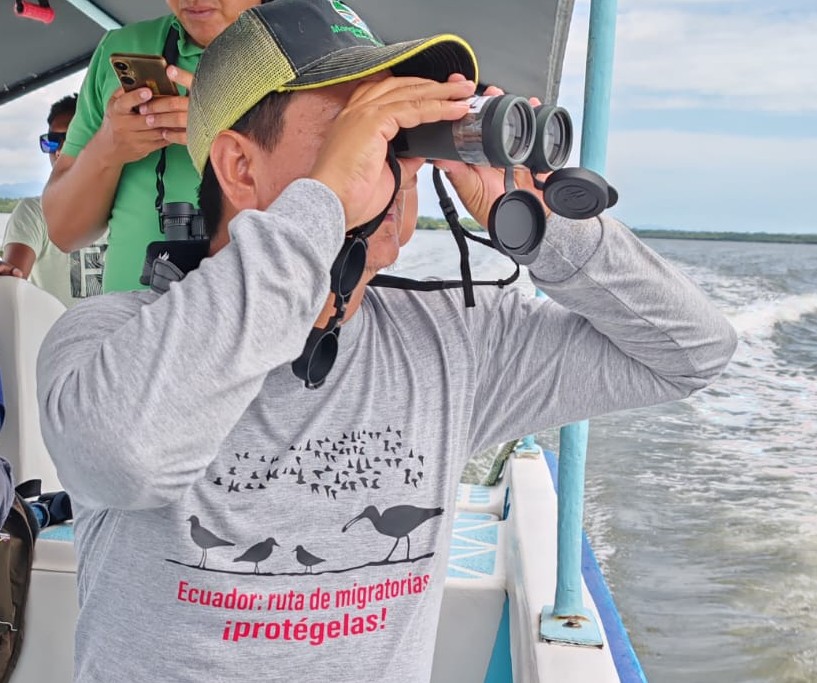Environmental Communication and Capacity Building for Shorebird Monitoring and Conservation
MSP+ Science to action 2024-2025

In 2022, a spark of inspiration ignited a mission that continues to grow strongly today: strengthening the capacity of protected area managers and officials on the Ecuadorian coast. In its first phase, we reached 26 park rangers from two protected areas.
With this new phase, between September 2024 and 2025, through this project, we are promoting the implementation of Ecuador’s National Shorebird Conservation Plan, prioritizing key resting and feeding sites for thousands of migratory birds. Our strategic ally is the Marine-Coastal Protected Areas, which host critical habitats for these species.
We seek to empower those on the front lines of defense: the park rangers. We provide them with knowledge, tools, and motivation to become an active part of the MSP network, a community dedicated to monitoring, research, and conservation.
MSP+ makes a difference by integrating Protected Areas
MSP+ has been the catalyst we needed. It allowed us to align and contribute to the strategic pillars of the National Shorebird Plan for research and monitoring.
On the other hand, it opened the doors for us to integrate the Protected Areas into the adventure of counting birds and collecting information that would otherwise be impossible.
Today, thanks to this collective effort, we monitor more than 57,000 acres (23,000 hectares) of coastal wetlands, and Ecuador has three sites designated as part of Western Hemisphere Shorebird Reserve Network (WHSRN), which are also Key Biodiversity Areas (KBAs).

Inspiring Results: partnerships and capacity building
The park rangers have shown contagious motivation. Their desire to learn, to care, and to be part of an international conservation network drives us to continue.
- We successfully trained park rangers from two key protected areas: the Muisne River Estuary Marine Reserve and the Villamil Beaches National Recreation Area.
- We conducted outreach activities with high school students from four educational institutions in the Santa Elena Canton, and will soon do so in six more in the Salinas Canton.
- We have strengthened community and technical ties, felt welcome in the protected areas, and are very pleased to be able to share our knowledge with the park rangers, who now aim to have their protected areas recognized as new WHSRN sites.
- Birds are an important component of these areas, and that’s why we want to elevate them within the Environmental Management Plans as “fine-filter” conservation objectives.

What's next: opportunities to multiply the impact
Field experience has allowed us to build participatory summaries that will guide priority actions to conserve and restore critical shorebird habitats on the Pacific coast of Ecuador.
In future phases, we will be able to focus on concrete habitat management and restoration actions to ensure that these spaces continue to be a refuge for the hemisphere’s migratory birds.
Protected area staff aim to have their protected areas recognized as new WHSRN sites in the coming years.
To learn more about this project
Aves y Conservación – Birds conect the world
Ana Agreda aagreda@avesconservacion.org
Danixa del Pexo ddelpezo@avesconservacion.org

